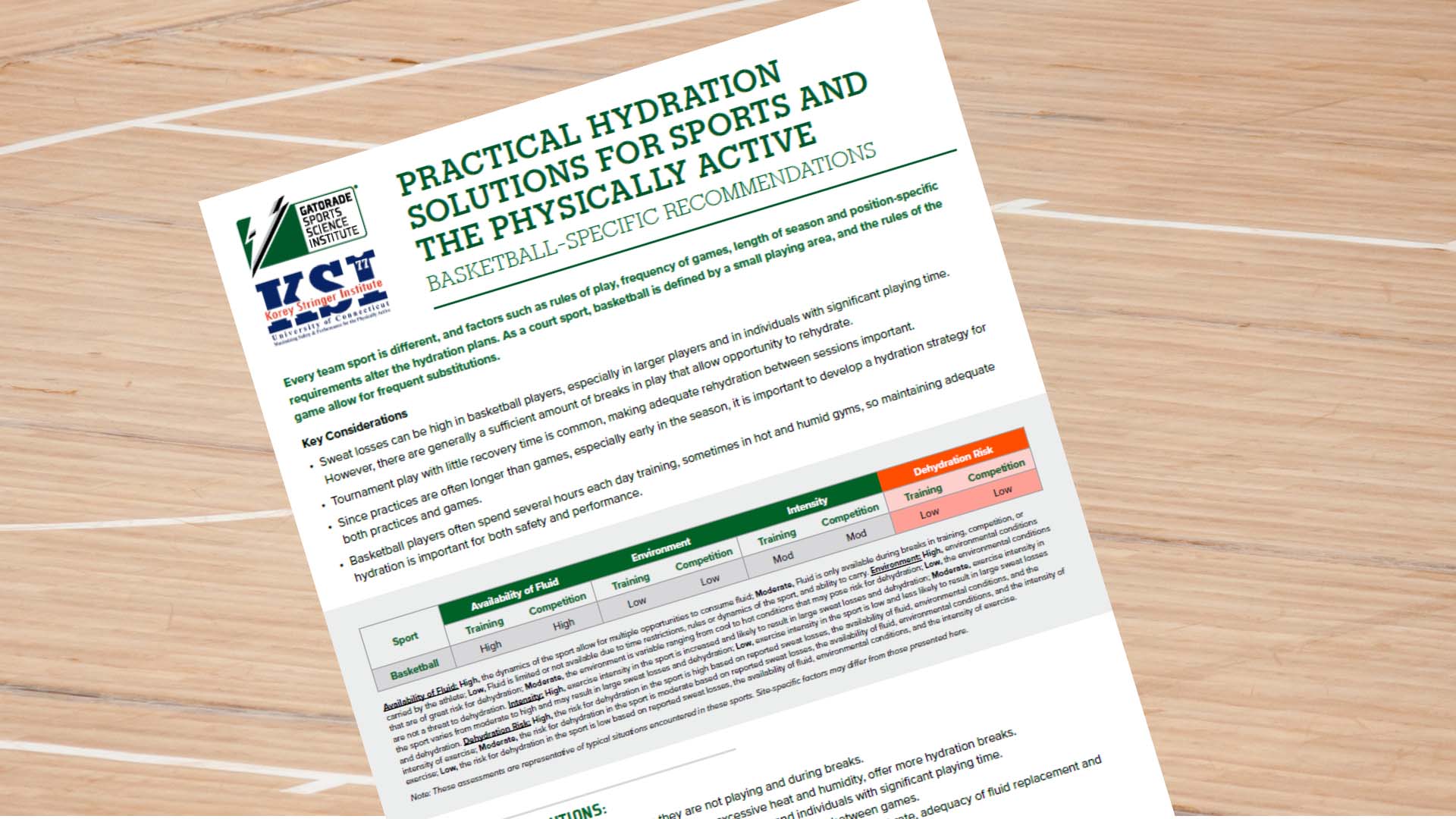Every team sport is different, and factors such as rules of play, frequency of games, length of season and position-specific requirements alter the hydration plans. As a court sport, basketball is defined by a small playing area, and the rules of the game allow for frequent substitutions.
Key Considerations
- Sweat losses can be high in basketball players, especially in larger players and in individuals with significant playing time. However, there are generally a sufficient amount of breaks in play that allow opportunity to rehydrate.
- Tournament play with little recovery time is common, making adequate rehydration between sessions important.
- Since practices are often longer than games, especially early in the season, it is important to develop a hydration strategy for both practices and games.
- Basketball players often spend several hours each day training, sometimes in hot and humid gyms, so maintaining adequate hydration is important for both safety and performance.

Individual Sport Factors that Influence Dehydration
Availability of Fluid
- High: Dynamics of the sport allow for multiple opportunities to consume fluid
- Moderate: Fluid is only available during breaks in training, competition, or carried by the athlete
- Low: Fluid is limited or not available due to time restrictions, rules or dynamics of the sport, and ability to carry
Environment
- High: Environmental conditions that are of great risk for dehydration<
- Moderate: Environment is variable ranging from cool to hot conditions that may pose risk for dehydration
- Low: Environmental conditions are not a threat to dehydration
Intensity
- High: Exercise intensity in the sport is increased and likely to result in large sweat losses and dehydration
- Moderate: Exercise intensity in the sport varies from moderate to high and may result in large sweat losses and dehydration
- Low: Exercise intensity in the sport is low and less likely to result in large sweat losses and dehydration
Dehydration Risk
- High: Risk for dehydration in the sport is high based on reported sweat losses, the availability of fluid, environmental conditions, and the intensity of exercise
- Moderate: Risk for dehydration in the sport is moderate based on reported sweat losses, the availability of fluid, environmental conditions, and the intensity of exercise
- Low: Risk for dehydration in the sport is low based on reported sweat losses, the availability of fluid, environmental conditions, and the intensity of exercise
Note: These assessments are representative of typical situations encountered in these sports. Site-specific factors may differ from those presented here.
Practical Solutions
- Ensure athletes are rehydrating when they are not playing and during breaks.
- Consider the temperature of the gym. If there is excessive heat and humidity, offer more hydration breaks.
- High sweat rates are common, especially in larger players and individuals with significant playing time.
- During tournament play, ensure athletes are adequately rehydrating between games.
- Monitor acute changes in body mass during exercise bouts to determine sweat rate, adequacy of fluid replacement and fluid needs for recovery.









